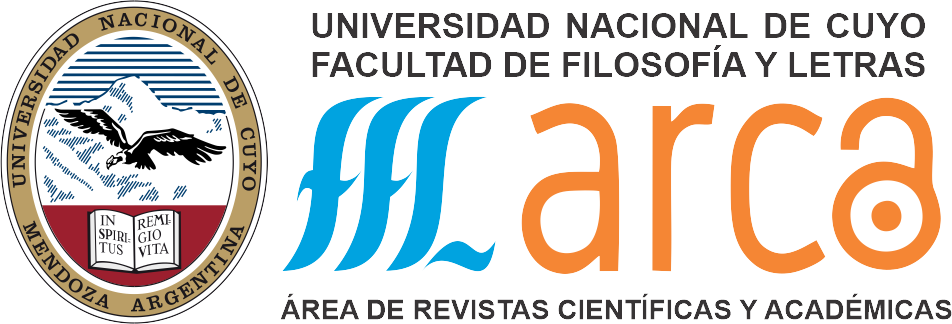“A way of seeing”. Contributions of Human-Animal Studies to rethink wildlife conflicts
DOI:
https://doi.org/10.48162/rev.48.055Keywords:
Human-Animal Studies, Conflict with wildlife, Wildlife, Society/NatureAbstract
This article reflects on wildlife conflicts using the perspective of Human-Animal Studies (HAS). It is a theoretical proposal exclusively, based on which the methodology includes detailed reading and analysis of different groups of bibliographic background. The main results indicates that the relationships between humans and wild animals do not constitute, so far, a topic of outstanding interest in HAS. For its part, in the study of wildlife conflicts, although aspects of its human dimensions have gradually been incorporated, in general, persists a definition of the animal reduced to its biological or instinctive aspects. In this sense, the HAS offer a different framework, which can make this univocal definition more complex, due to, on the one hand, inquiry into human-animal bonds is privileged, and on the other, animals are conceived as sentient beings and as an active part of those relationships.
References
BIRKE, L. and HOCKENHULL, J. (2012a). Introduction: On Investigating Human-Animal Relationship. En L. a. Birke, Crossing Boundaries. Investigating Human-Animal Relationship (págs. 1-14). Boston: Brill.
BIRKE, L. and HOCKENHULL, J. (2012b). Investigating Human-Animal Bonds: Realities, Relatings, Research. En L. a. Birke, Crossing Boundaries. Investigating Human-Animal Relationship (págs. 15-36). Boston: Brill.
BULLER, H. (2004). Where the wild things are: the evolving iconography of rural fauna. Journal of Rural Studies, 131-141.
CARUSO, N.; LUENGOS VIDAL, E.; LUCHERINI, M.; GUERISOLI, M.; MARTÍNEZ, S. y CASENAVE, E. (2017). Carnívoros en el sudoeste de la provincia de Buenos Aires: ecología y conflictos con los ganaderos. Revista de Investigaciones Agropecuarias, 1-10.
CRONON, W. (1995). The Trouble with Wilderness; or Getting Back to th Wrong Nature. En W. E. Cronon, Uncommon Ground: Rethinking the Human Place in Nature (págs. 69-90). New York: W.W. Norton.
DAVEY, G. (2007). Visitors' Effects on the Welfare of Animals in the Zoo: A Review. Journal of Applied Animal Welfare Science , 169-183.
DE CÓZAR ESCALANTE, J. (2014). ¿Una cosmopolítica de lo salvaje?: la composición técnica del mundo natural. Pléyade, 97-118.
DECKER, D. and CHASE, L. (1997). Human dimension of living with wildlife. A management challenge for the 21st century. Wildlife Society Bulletin , 25(4) 788-795.
DEMELLO, M. (2012). Animals and Society. An introduction to Human-Animal Studies. New York: Columbia University Press.
DESPRET, V. (2022). Habitar como un pájaro. Modos de hacer y de pensar los territorios. . Buenos Aires: Cactus.
DICKMAN, A. J. (2010). Complexities of conflict: the importance of considering social factors for effectively resolving human-wildlife conflict. Animal Conservation, vol. 13, 458-466.
ENCK, J. and DECKER, D. (1997). Examining assumptions in wildlife management: A contribution of human dimensions inquiry. Human Dimensions of Wildlife: An International Journal, 2:3, 56-72.
GÁSPERO, P.; EASDALE, M.; PEREIRA, J.; FERNÁNDEZ-ARHEX, V.; VON THÜGEN, J. (2018). Human-carnivore interaction in a context of socio-productive crisis: Assesing smallholder strategies for reducing predation in North-West Patagonia, Argentina. Journal of Arid Environments, 92-98.
HILL, C. (2017). Introduction. Complex Problems. Using a Biosocial Approach to Understanding Human-Wildlife Interactions. En C. Hill, & A. a. Weber, Understanding Conflicts about Wildlife. A Biosocial Approach (págs. 1-14). New York: Berghahn.
KNIGHT, J. (2009). Introduction. En J. K. Editor, Natural Enemies. People-wildlife conflicts in anthropological perspective (págs. 1-17). New York: Routledge.
MANFREDO, M. (2008). Who cares about wildlife? Social Science Concepts for Exploring Human-Wildlife Relationships and Conservation Issues. New York: Springer.
MEKONEN, S. (2020). Coexistence between human and wildlife: the nature, causes and mitigations of human wildlife confict around Bale Mountains National Park, Southeast Ethiopia. BMC Ecology, 1-9.
MICHALON, J. (2020). Causa animal y ciencias sociales. ¿Del antropocentrismo al zoocentrismo? Nueva Sociedad, 116-126.
NOCELLA II, A.; SORENSON, J.; SOCHA, K.; MATSUOKA, A. (2014). The Emergence of Critical Animal Studies: The Rise of Intersectional Animal Liberation. En J. S. Anthony J. Nocella II, DEFINING Critical Animal Studies: An Intersectional Social Justice Approach for Liberation (págs. xix-xxxvi). NEw York: Peter Lang Publishing.
NOVARO, A.; GONZÁLEZ, A.; PAILACURA, O.; BOLGERI, M.; HERTEL, M.; FUNES, M.; WALKER, R. (2017). Manejo del conflicto entre carnívoros y ganaderia en Patagonia utilizando perros mestizos protectores de ganado. Mastozoología Neotropical, 24 (1):47-58.
O´CONNOR, J. (2011). Causas Naturales. Ensayos de marxismo ecológico. México Distrito Federal :Siglo XXI.
SHAPIRO, K. (2020). Human-Animal Studies: Remembering the Past, Celebrating the Present, Troubling the Future. Animals and Society, 797-833.
SHERWEN, S.; HEMSWORTH, P. (2019). The Visitor Effect on Zoo Animals: Implications and Opportunities for Zoo Animal Welfare. Animals, 1-27.
TREVES, A. and ULLAS KARANTH, K. (2003). Human-Carnivore Conflict and Perspectives on Carnivores Management Worldwide. Conservation Biology, Vol. 17, Nº6, 1491-1499.
TREVES, A.; WALLACE, R.; NAUGHTON-TREVES, L.; MORALES, A. (2006). Co-Managing Human-Wildlife Conflicts: A Review. Human Dimension of Wildlife, Vol. 11, 383-396.
Downloads
Published
How to Cite
Issue
Section
License
Copyright (c) 2023 María Paula D’Amico

This work is licensed under a Creative Commons Attribution-NonCommercial 4.0 International License.





















